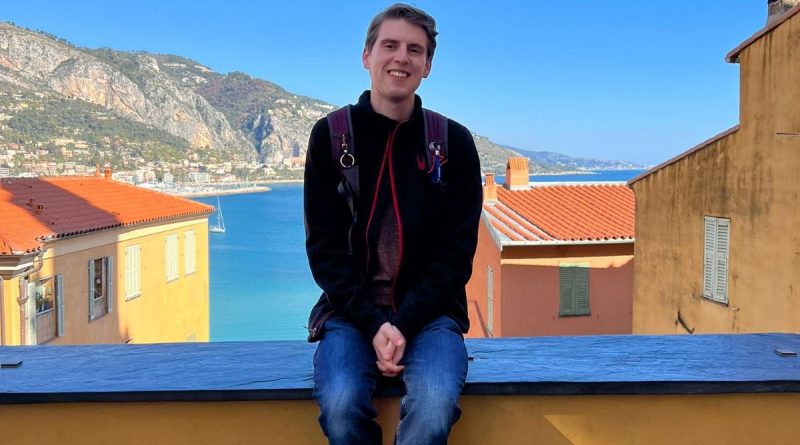French Protest Culture: A National Treasure
Eric Bunce
Staff Writer
During my four months studying abroad in Grenoble, France during Spring 2022, I started to develop a Saturday routine. Weather permitting, I would go for a hike in the morning before grabbing a spot at a café and watching the protests. Indeed, every Saturday, for months, there were afternoon protests. This very French routine was bemusing at first; it does fit the cliché perfectly. But this bemusement quickly turned to annoyance when the trams wouldn’t run. Yet, towards the end of my stay, the ‘manifestations’—as the French would call them—were absolutely fascinating to me.
Coming from the New York metro area, I am no stranger to protests. You occasionally stumble across them in downtown Manhattan, often in front of town hall or the federal court building. Every once in a while there is a truly massive event like the Climate Strike in 2019 or the 2017 Women’s March. However, protests in France are a different breed for a few main reasons: their frequency, widespread diffusion, and relatively high success rate.
The frequency of protests in France is shocking. Every weekend from January through May, there were demonstrations in the center of Grenoble. While Grenoble itself is not a particularly important city politically, the same cannot be said for Paris, which weathers almost daily protests. I was only in the capital for a four-day trip, yet I encountered a different march on the Place de la Bastille each afternoon. Certainly, it is no coincidence that modern protesters are drawn to the site of one of the most famous historical protests: the destruction of the Bastille in 1789. When seeking to rationalize French protest culture, many commentators have pointed to a so-called ‘revolutionary spirit,’ dating back to the 18th-century revolution.
However, a much simpler explanation also exists: the French have turned protesting into a form of socialization. Recent videos out of Paris show protesters pushing grills along their route and frequently stopping for food and coffee breaks. Not even social justice gets in the way of mealtimes. Regardless of whether it is just to get some fresh air or some latent revolutionary spirit, it appears that the frequency of protests in France is far greater than in the U.S.
The widespread diffusion of protests across the population also distinguishes French protest culture from that of America. People are willing to get out on the streets for issues that do not impact them directly, such as the government’s strict COVID-19 vaccine mandate. I assumed that most of these demonstrators were against the vaccination mandate, but after the protest, many would go to a café, still in their high visibility vests, and display their vaccine card to get a table. They were protesting the vaccine mandate despite being vaccinated themselves!
For these activists, it was a matter of principle. Even if the issue no longer affected them directly, they still made their voice heard. During the peak of the widespread yellow vest movement in 2018, 78 percent of people on both the left and right supported the protests, despite the massive disruptions it caused. This widespread diffusion of support for protests is far less common in the U.S., where issues, and therefore demonstrations, are often split clearly along partisan lines.
Lastly, these frequent and widespread protests have a fairly successful record. In 2018, the government abandoned a new gas tax and raised the minimum wage when faced with the Yellow Vest movement. A blockade of the port of Calais in 2009 forced a 66 million euro government bailout for French fishermen, and the National Assembly abandoned labor reforms in 2006 when faced with overwhelming demonstrations. Though there are exceptions, such as the government raising the retirement age in March despite enormous protests that left Paris’s streets covered in burning piles of trash, a glance at modern French politics is flush with examples where the government acquiesced to persistent protesters. Overall, more French movements have achieved their goals than in the U.S., which has seen depressingly few protests achieve their goals in past decades.
While far from perfect, the protest culture in France is a representation of their democracy. Through demonstrations, the less wealthy and powerful parts of the population have a voice, even young people. In just four months of living in Grenoble, I experienced that myself. I walked out of class, one day, into hundreds of picketing students seeking signatures for a petition to prevent the cancellation of summer classes for construction. I attempted to explain that I would not be there come summer, but they did not comprehend my argument, saying, “Well, you’re still a student, aren’t you? Show some solidarity.” Needless to say, I signed the petition, and the university found a way to keep the majority of classes running.
The takeaway on French protest culture is that everyone, even students, when well organized, has a voice in policy that their counterparts simply do not have in the U.S. The French tradition of protests makes the government more accountable to all of its citizens, even those without financial power. Marching in the streets, everyone, even the poor and powerless, has a voice, and that is more than could be said for Americans.
Eric Bunce pictured in France


